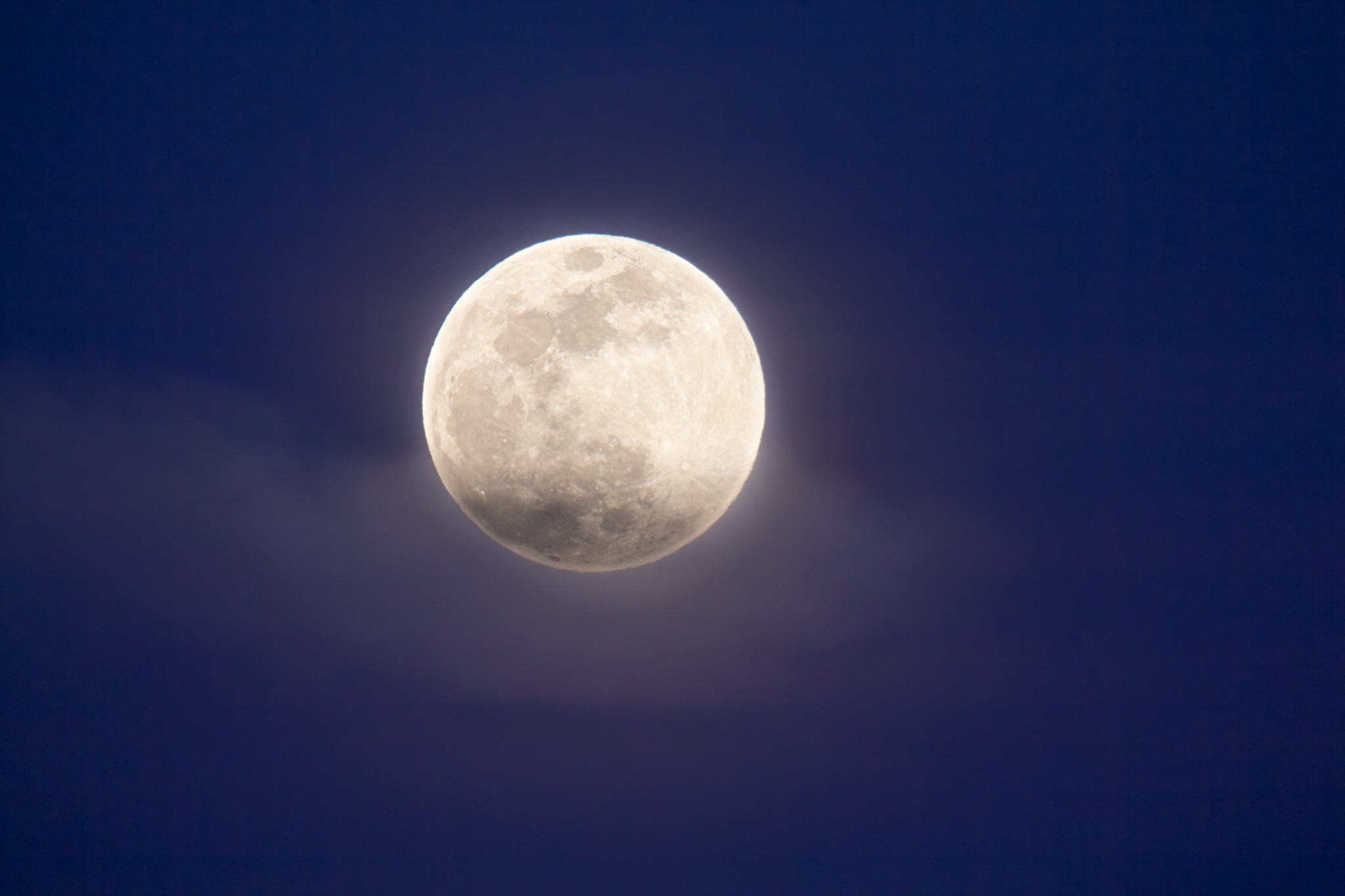
Next Sunday (Aug. 22) brings us the August full moon and in addition, it will also be a "Blue Moon."
But wait a minute, you might ask: Isn't a "Blue Moon" defined as the second full moon that occurs during a calendar month? The full moon on Aug. 22 is the only full moon this month. So, how can we call it a Blue Moon?
Yet it indeed is a Blue Moon — but only if we follow what is now a somewhat obscure rule. In fact, it was the original definition for branding a full moon as "blue."
Related: Blue Moon, Blood Moon, Black Moon: What's with all these weird moon names?
Orion GoScope II 70 Telescope Moon Kit: $89.99 at Amazon
If you know a youngster who can't get enough of the moon, then they'll be delighted with views through the Orion GoScope II. Revealing craters and seas up close, this little telescope comes with a carry case and moon map.
The almanac rule
Back in the July 1943 issue of Sky & Telescope magazine, in a question and answer column, there was a reference made to the term "Blue Moon." The unusual term was cited from a copy of the 1937 edition of the now-defunct Maine Farmers' Almanac.
On the almanac page for August 1937, the calendrical meaning for the term "Blue Moon" was given.
That explanation said that the full moon "usually comes full 12 times in a year, three times for each season." Occasionally, however, there will come a year when there are 13 full moons, not the usual 12. The almanac explanation continued:
Get the Space.com Newsletter
Breaking space news, the latest updates on rocket launches, skywatching events and more!
"This was considered a very unfortunate circumstance ... and it upset the regular arrangement of church festivals. For this reason 13 came to be considered an unlucky number."
And with that extra full moon, it also meant that one of the four seasons that year would contain four full moons instead of the usual three. When a particular season has four full moons the third was apparently called a Blue Moon so that the fourth and final one can continue to be called the "late moon."
So, where did we get the "two full moons in a month rule" that is so popular today?
Major misapprehension!
Once again, we must turn to the pages of Sky & Telescope. This time, on page 3 of the March 1946 issue, James Hugh Pruett wrote an article, "Once in a Blue Moon," in which he made a reference to the term "Blue Moon" and the S&T article from July 1943. Pruett unfortunately came to this conclusion:
"Seven times in 19 years there were — and still are — 13 full moons in a year. This gives 11 months with one full moon each and one with two. This second in a month, so I interpret it, was called Blue Moon."
Mr. Pruett's 1946 explanation was, of course, the wrong interpretation and it might have been completely forgotten were it not for journalist Deborah Byrd, who used it on her popular National Public Radio program, StarDate on Jan. 31, 1980. Over the next decade, Mr. Pruett's misinterpretation gained traction with a new audience of baby boomers, and today his "two full moons in a month rule" is recognized worldwide.
Meanwhile, the "original" Maine Farmers' Almanac rule had been all but forgotten.
As was noted earlier, that publication has long since gone out of business. You should not confuse it with The Farmers' Almanac which has been publishing continuously since 1818, but coincidentally also happens to be based in Lewiston, Maine.
Not quite "full" ... and not literally "blue"
So, going by the old "Maine Almanac rule," for summer 2021, we have four full moons: June 24, July 23, Aug. 22nd and Sept. 20. The third full moon — the Blue Moon according to the original rule set down by the Maine Farmers' Almanac — comes on Sunday, with the moon officially turning full at 8:02 a.m. EDT (1202 GMT).
That means that for North America, the moon phase will be just past full — actually a waning gibbous moon — when it comes over the horizon at nightfall that Sunday evening. Of course, to everyone who sees it, it will still look full, even though it will be ever-so-slightly out of perfect roundness.
And don't expect to see the moon shine with a bluish tint. In the past, there have been very unusual atmospheric circumstances that have caused the moon (and the sun) to appear bluish, caused by anthropogenic aerosols injected into the atmosphere such as volcanic ash and dust (after the eruption of the Krakatoa volcano in August 1883) or airborne soot from forest fires (such as from western Canada in September 1950). But nothing out of the ordinary has occurred in recent days or weeks, so this weekend's moon should look pretty much the way we are accustomed to seeing it.
Here at Space.com, we have posted many stories regarding the differences between the two blue moon definitions over the years. And as it turns out, the last time we had a blue moon based on the "four full moons in a season" rule was in May 2019. Consider this column an updated version for 2021.
It seems to be an August thing
So, when are the next Blue Moons after this Sunday?
If you go by the "Pruett two full moons in a month rule," the next blue moon will also come in the month of August — Aug. 30, 2023 to be exact.
But if you still go by the old "Maine Almanac rule," that won't happen again until yet another August, this time on Aug. 19, 2024, which (as is the case this month) will be the third full moon of four during the summer season of that year.
So, what Blue Moon definition tickles your fancy? Is it the second full moon in a calendar month, or the third full moon in a season with four?
Maybe it's just one or maybe it's both. We leave the final decision solely up to you.
Editor's note: If you snap an amazing photo of the Blue Moon of August 2021 and would like to share it for a story or photo gallery, send images and comments to spacephotos@space.com!
Joe Rao serves as an instructor and guest lecturer at New York's Hayden Planetarium. He writes about astronomy for Natural History magazine, the Farmers' Almanac and other publications. Follow us on Twitter @Spacedotcom and on Facebook.
Join our Space Forums to keep talking space on the latest missions, night sky and more! And if you have a news tip, correction or comment, let us know at: community@space.com.

Joe Rao is Space.com's skywatching columnist, as well as a veteran meteorologist and eclipse chaser who also serves as an instructor and guest lecturer at New York's Hayden Planetarium. He writes about astronomy for Natural History magazine, Sky & Telescope and other publications. Joe is an 8-time Emmy-nominated meteorologist who served the Putnam Valley region of New York for over 21 years. You can find him on Twitter and YouTube tracking lunar and solar eclipses, meteor showers and more. To find out Joe's latest project, visit him on Twitter.










